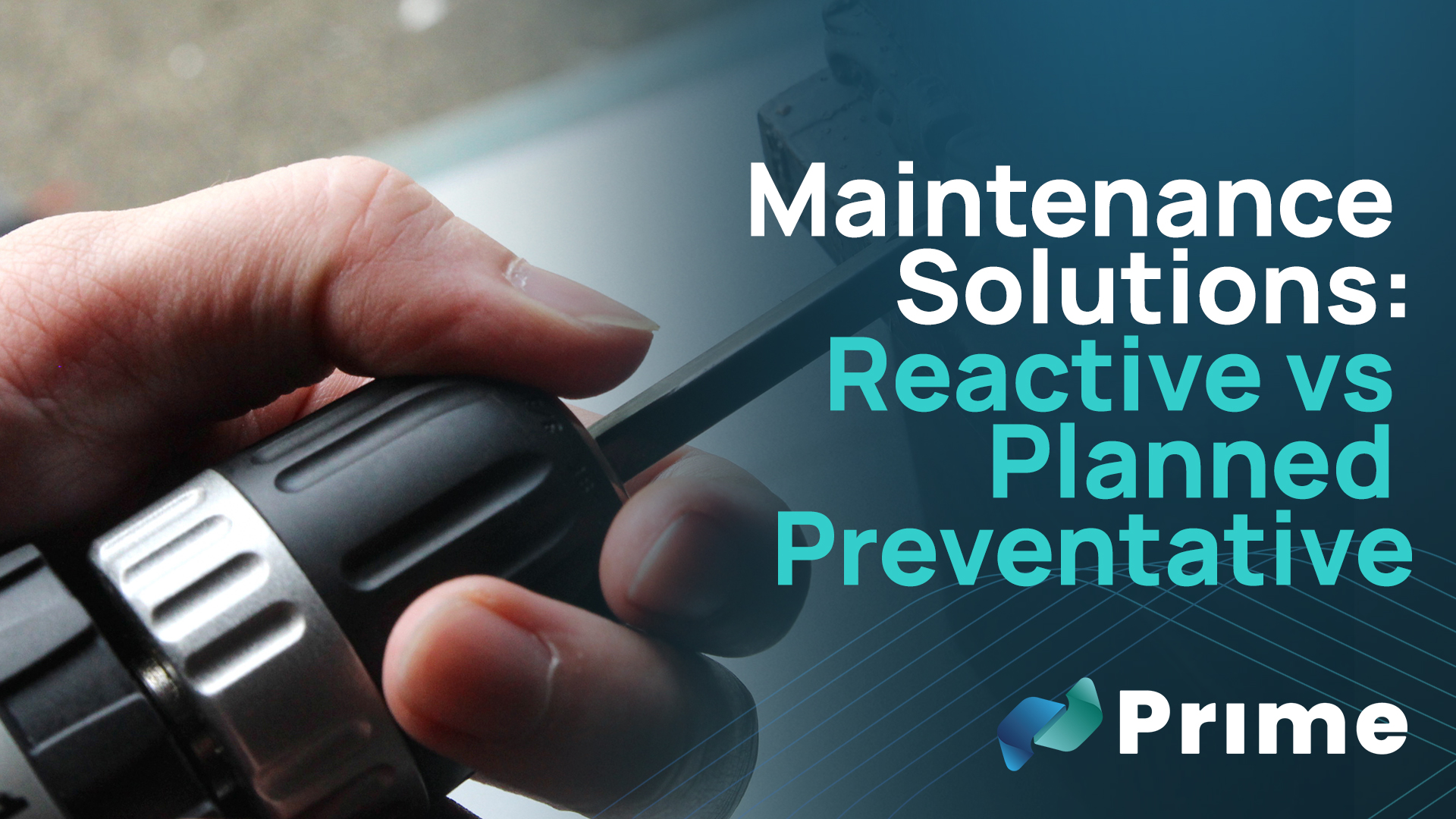Maintenance strategies are essential for ensuring the seamless functionality of your assets, systems, and business operations. They form the backbone of any business, playing a pivotal role in maintaining smooth operations, functional facilities, and the safety of both staff and customers. Understanding the critical importance of uninterrupted business activities, many companies have adopted a combination of reactive and planned preventative maintenance (PPM) strategies to ensure their operations run smoothy and efficiently.
Many businesses face the challenge of choosing between two primary maintenance strategies: planned preventative maintenance (PPM) and reactive maintenance. While PPM focuses on scheduled, routine checks and servicing to prevent equipment failures and extend the lifespan of assets, reactive maintenance addresses issues as they arise, providing a rapid response to sudden breakdowns or unexpected failures. These options offer distinct approaches to maintaining operational efficiency and resilience.
Despite meticulous planning or the implementation of preventative measures, the unpredictable nature of accidents and faults persists, underscoring the need for businesses to have agile and efficient response mechanisms in place to mitigate disruptions effectively. Asset breakdowns and unexpected issues can disrupt business operations and lead to significant downtime. Therefore, having a robust maintenance strategy is essential for any business. Whether adopting a proactive approach with PPM or relying on the swift response capabilities of reactive maintenance, businesses must ensure they are prepared to handle unforeseen challenges and maintain smooth operations.
What is Reactive Maintenance?
Reactive maintenance, also known as corrective or breakdown maintenance, refers to the practice of addressing equipment/asset failures and issues as they occur. Instead of adhering to a planned maintenance schedule, reactive maintenance involves responding quickly to unexpected breakdowns, malfunctions, or damages such as such as plumbing issues, roof leaks, electrical malfunctions, HVAC system breakdowns, equipment failures, building structural issues, security system malfunctions, and grounds maintenance needs.
Advantages of Reactive Maintenance
Having a reactive maintenance strategy in place provides several advantages:
-
- Immediate Response – One of the primary benefits of reactive maintenance is its ability to address issues as they occur. When equipment breaks down unexpectedly, a quick and focused response is crucial to minimise downtime. Reactive maintenance allows for immediate action, ensuring that problems are fixed promptly, reducing the impact on operations.
- Cost-Effectiveness – Reactive maintenance can be more cost-effective in the short term because it avoids the routine costs associated with planned maintenance schedules. Businesses only spend money on repairs when necessary, which can be beneficial for those operating on tight budgets or with less critical equipment that doesn’t require constant oversight.
- Simplicity and Flexibility – Implementing a reactive maintenance strategy is straightforward. It doesn’t require extensive planning or scheduling, which can simplify maintenance operations. This flexibility allows businesses to allocate resources to other areas until an issue arises, making it easier to manage day-to-day operations without the need for constant oversight and planning.
What is Planned Preventative Maintenance (PPM)?
Planned preventative maintenance (PPM) refers to any maintenance activity that is planned, documented, and scheduled in advance, typically based on manufacturer recommendations, industry best practices, or regulatory requirement. It encompasses proactive measures undertaken to ensure the ongoing functionality, reliability and longevity of equipment, facilities, or systems. By addressing maintenance needs before they escalate into problems, PPM helps minimise downtime, reduce costly repairs and optimise the performance and lifespan of assets.
Advantages of Planned Preventative Maintenance
PPM offers numerous benefits that contribute to the smooth and efficient operation of business assets and facilities:
-
- Reduced Downtime – One of the most significant benefits of PPM is the reduction of downtime. By scheduling regular maintenance, potential issues can be identified and resolved before they lead to equipment failure. This proactive approach ensures continuous operations, minimising disruptions and maintaining productivity.
- Cost Savings – Although PPM involves an upfront investment, it often leads to substantial long-term savings. Regular maintenance helps avoid costly emergency repairs that can arise from unexpected breakdowns. By preventing major failures, PPM reduces repair costs and extends the lifespan of equipment, leading to better return on investment.
- Improved Safety – Regular maintenance activities help to identify and rectify safety hazards, ensuring a safer working environment for employees and customers. Well-maintained equipment is less likely to malfunction, reducing the risk of accidents and injuries. This is particularly crucial in industries where equipment failures can pose serious safety threats.
- Compliance with Regulations – Many industries are subject to strict regulatory standards that mandate regular maintenance of equipment and facilities. PPM helps businesses comply with these regulations, avoiding potential fines and legal issues. Compliance also enhances a company’s reputation for reliability and adherence to industry standards.
Balancing Reactive and Planned Maintenance
While both reactive and planned preventative maintenance have their respective advantages, the key to an effective maintenance strategy lies in finding the right balance between the two:
-
- Assessing Business Needs – The nature of your business and the criticality of your assets will determine the appropriate mix of reactive and planned maintenance. Industries with highly sensitive equipment may benefit more from a robust PPM strategy, while others with less critical assets might rely more on reactive maintenance.
- Risk Management – Consider the potential risks associated with equipment failure and the impact on your business operations. High-risk environments may require more frequent and comprehensive preventative measures to mitigate potential disruptions
- Budget Considerations – Financial constraints often play a significant role in shaping maintenance strategies. While PPM can lead to long-term savings, businesses must also allocate resources for immediate reactive repairs when necessary.
Conclusion
In conclusion, a well-rounded maintenance strategy that combines reactive and planned preventative maintenance is essential for the smooth operation of business assets and facilities. By understanding the unique advantages and applications of each approach, businesses can effectively minimise downtime, reduce costs, and ensure a safe and productive environment. Investing in both reactive and planned maintenance not only enhances the reliability and efficiency of your operations but also provides a solid foundation for long-term success.
Here at Prime, we provide a wide range of reactive maintenance and planned preventative maintenance solutions to support your business. Get in touch today for more information.




